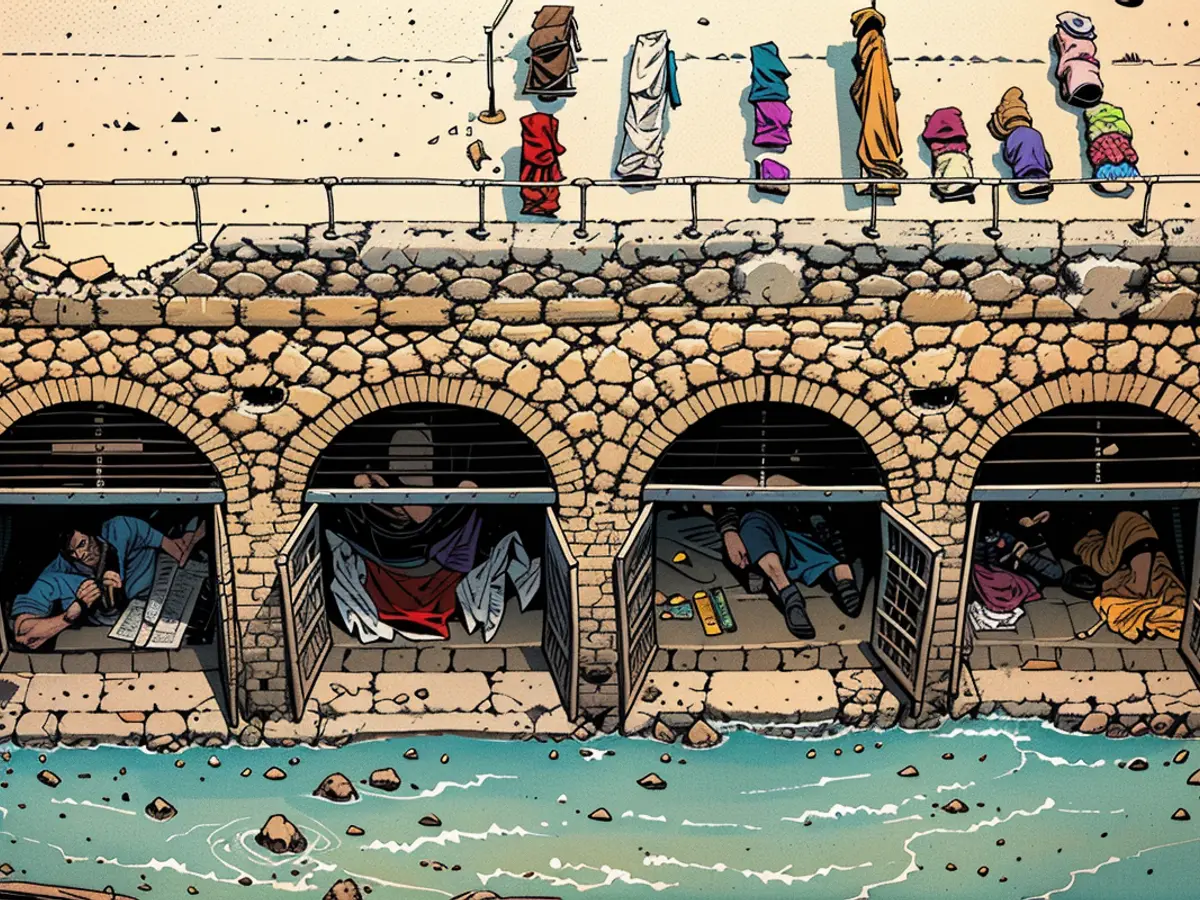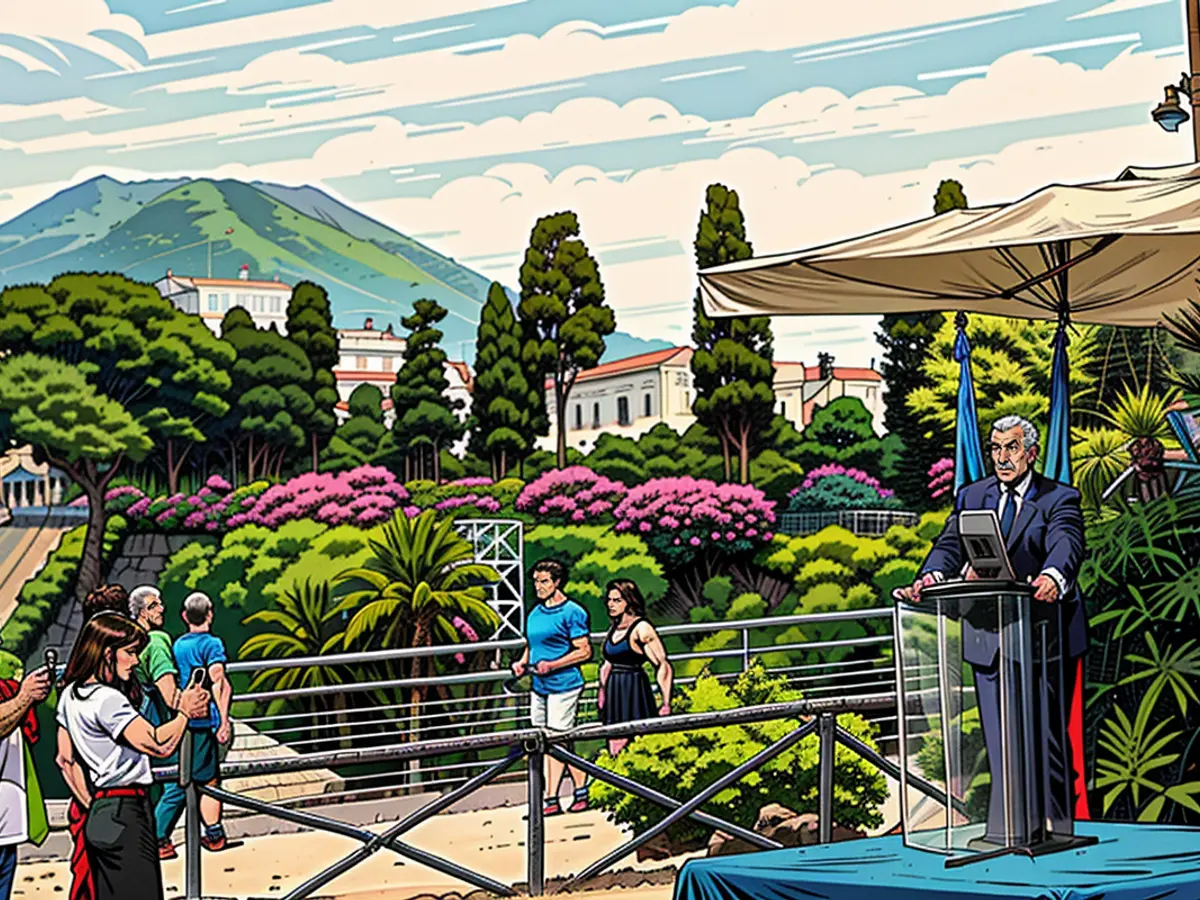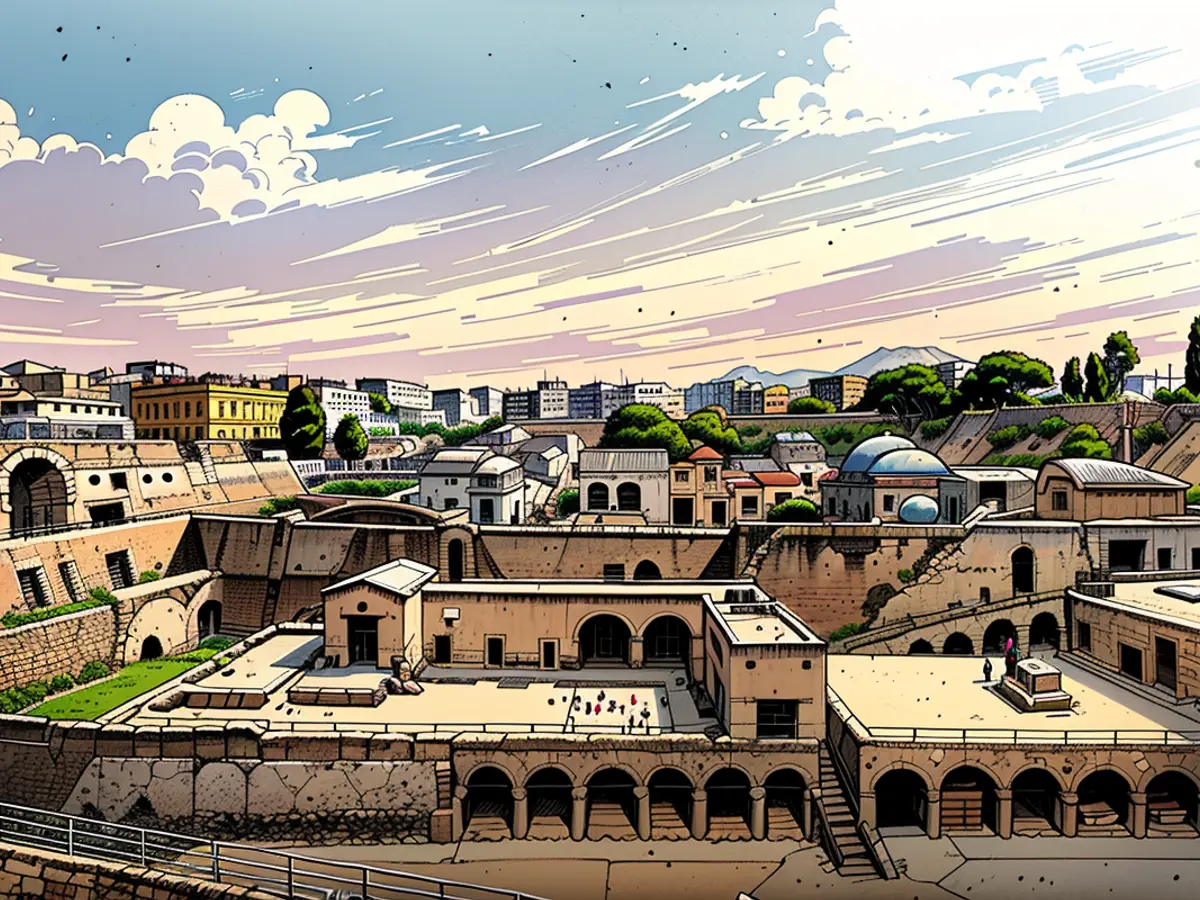Beach once obliterated by Mount Vesuvius's 79AD eruption now restored, open for public once more.
The beach within the Herculaneum archaeological site is believed to be where over 300 men tragically perished during a catastrophe in 79AD, as they desperately waited for rescue from a rescue team led by Pliny the Elder, a renowned Roman scholar and naval commander.
After years of archaeological digs and restoration efforts, it reopened to the public on Wednesday. During these works, human remains, along with evidence of the volcanic eruption, were uncovered.
As per Francesco Sirano, the director of the Herculaneum archaeological park, "It wasn't just about restoring the site, but also delving deep into scientific aspects. We conducted excavations, discovered remains, and found signs of pyroclastic flows that struck the city in 79AD, unearthing various materials."
One of the most significant discoveries at Herculaneum was the "last escapee" unearthed in 2021, a male skeleton around 40 years old. He seemed to be attempting to flee towards the sea while carrying a sack filled with his most valued belongings.

Italian Minister of Culture Gennaro Sangiuliano stated, "Herculaneum, Pompeii, Oplontis – we're working on numerous projects. In the budget, we've renewed funding for excavations, and construction sites are bustling with activity, unearthing new treasures that fuel the scholars’ work."
He continued, "We're committed to creating, connecting, and strengthening this area, which UNESCO has recognized for its significant value, and is one of the greatest archaeological sites globally. We're certain that this will foster socio-economic development."

Read also:
The restored beach in Herculaneum, a site rich in Roman history, offers visitors a glimpse into the past, showcasing its significance not only in Europe but also on a global scale.
Europe and the world are eagerly following the ongoing archaeological projects and discoveries in Herculaneum, as they contribute to a deeper understanding of ancient Roman civilization.







